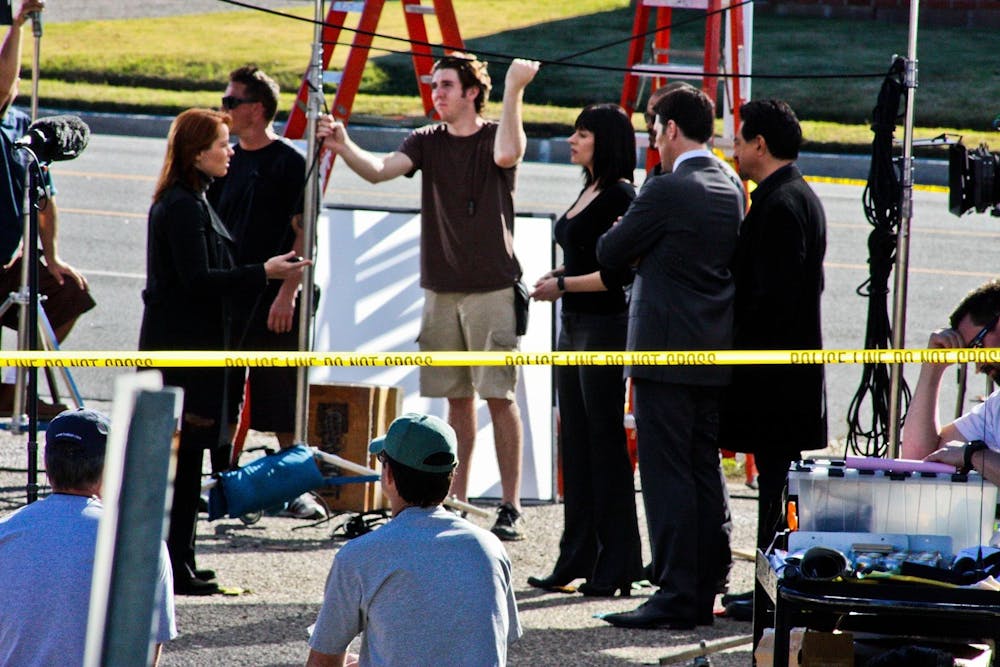At the peak of my pandemic boredom, I decided to re–watch Criminal Minds. I had first started streaming the iconic show, which follows members of the esteemed Behavioral Analysis Unit of the FBI, in middle school. And while I was far too young to be following the adventures of Aaron Hotchner, Spencer Reid, Derek Morgan, and co. as they apprehended some of the most notorious criminals in their fictional universe, I couldn’t help but remain invested in the high–paced episodes. After a 15–season long run on CBS, a reboot of Criminal Minds is now set to air on Paramount+.
With increasing discourse surrounding the prevalence of “copaganda” in shows like Law and Order and NCIS, it only seems fitting to take a look at Criminal Minds' portrayal of a different branch law enforcement—and to examine how these depictions can skew our perception of this real–world organization.
While many people might claim to watch Criminal Minds and other fictional shows for pure entertainment rather than for any informational purposes, the "Sleeper Effect" tells us that even if people appear not to be immediately persuaded by any information they consume, it can still affect their beliefs and attitudes in the long–term.
In the case of Criminal Minds, the show's incorrect portrayals of the BAU's operations profoundly affect its real–life perception. Various aspects of the show have already been debunked, like the fact that there are no “profilers” on the BAU’s team, they don’t have a private jet to fly to the crime scenes (in fact, real criminal psychologists from the BAU rarely ever leave their desks), and they never apprehend the criminals themselves.
Beyond these smaller details, though, lies the question of the show's characterization of profiling itself. In every episode, the BAU delivers a profile of the criminal to the law enforcement teams they are working with. This profile provides a description of the unknown subject, or "unsub," that police should be on the lookout for, such as this one Agent Gideon delivers in the pilot episode: “The unidentified subject is white and in his late 20s. He’s someone you wouldn’t notice at first. He’s someone who'd blend into any crowd. The violent nature of the crime suggests a criminal record—petty crimes, maybe auto theft.”
Oftentimes, these profiles rely on assumptions grounded in facts. For example, one such assumption is that “cross–racial sexual crimes are rare"—meaning that the team will profile the race of the perpetrator of a sexual crime based on the races of the victims. This fact has been widely supported by criminologists studying the intersection of sexual violence and race, finding that sexual crimes are mostly intraracial.
While Criminal Minds gets conjectures like these right, in real life, using them as the basis for an entire investigation can often lead law enforcement to pigeonhole themselves into a profile—to make criminals fit their description rather than taking an approach that doesn’t limit their suspect pool so definitively. Criminal Minds tends to glorify the process of profiling, painting it as a fool–proof approach to solving crimes.
However, data shows that criminal profiling is not nearly as effective as television would make it seem. For one, profiles crafted by the professionals are only slightly more accurate than ones drawn up by completely untrained people picked off of the street. Meanwhile, a group of researchers at the University of Liverpool studying 100 British criminals concluded that neither the characteristics of a crime nor the characteristics of a crime scene can predict useful traits about a perpetrator.
For a little background on the popularity of criminal profiling in the public conscience, the origin of the profiling field kicked off with the hunt for the "Mad Bomber," George Metesky, in the 1940s and ’50s. Before the 16–year search for Metesky came to a close, he hid 33 pipe bombs in New York City and evaded capture by being someone who could “pass as your next–door neighbor.”
Before Metesky’s arrest, the police force became increasingly desperate for a break in the case, eventually turning to psychiatrist James A. Brussel for help. Brussel’s work on the case would birth criminal profiling, as he questioned whether he could work backwards by focusing on the Mad Bomber’s conduct to determine all aspects of his identity.
Brussel determined that the bomber was a “textbook paranoid schizophrenic,” a grudge–holding and reclusive virgin who had trouble holding down a job. Brussel also deduced that he’d be clean shaven and meticulous, and he’d be of Slavic descent—and that when arrested, he’d be wearing a buttoned, double–breasted suit.
When police finally arrested Metesky in his home, he was, in fact, dressed in a double–breasted suit. And while the precision of Brussel’s deductions was enough to cement him as somewhat of a legend, as well as the father of modern profiling, what many accounts of the event ignore is that he was wrong about many of the criminal's other key traits. For example, Brussel profiled the Mad Bomber as a "slob," while others assert that Brussel predicted Metesky to be neat and tidy.
The triumph of Brussel’s characterization of the Mad Bomber raises the question of profiling’s true effectiveness, as his correct guesses were exalted while his incorrect assumptions are largely forgotten. Today, this glorification of the field lives on in popular culture via shows like Criminal Minds.
As the field of criminal psychology continues to develop, questions of the complex nature of identity continues to pose a problem for profilers. To many, it seems reductive to work based on a series of assumptions and find a perpetrator to fit into their list of stereotypes. To others, criminal profiling is another tool to use when trying to break open a case or understand the mind of a criminal to stop them.
Criminal Minds is returning for another season—and I’ll probably end up watching it. But I'll probably make sure to do so with a little bit more skepticism.

